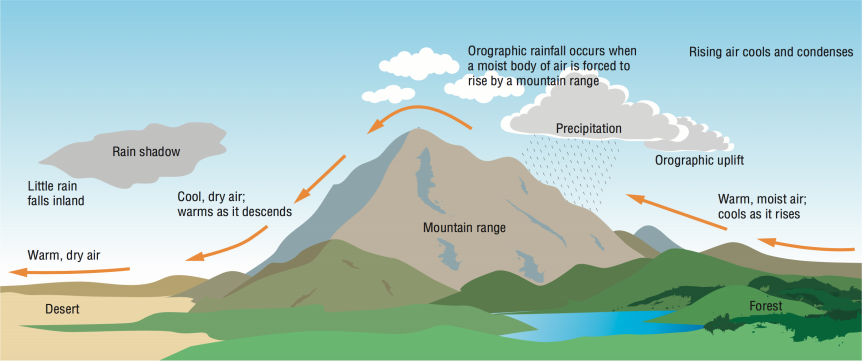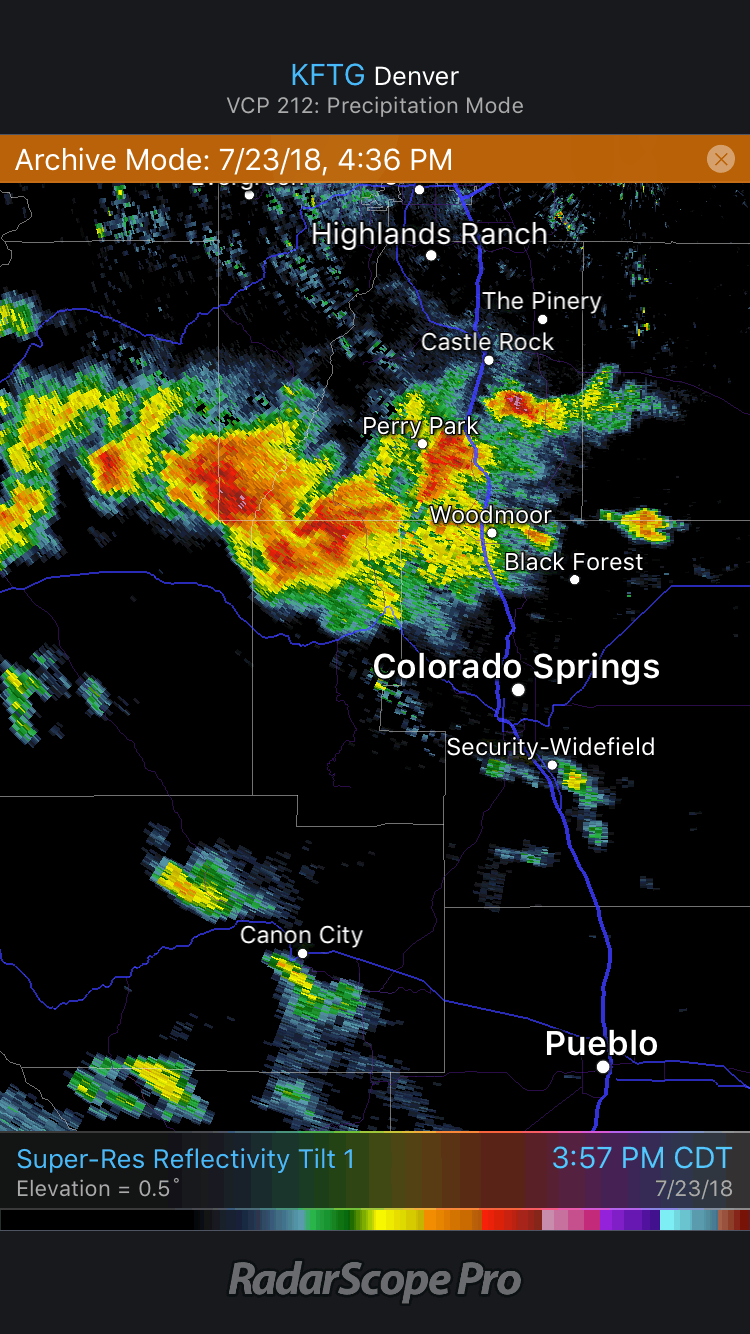Do You Know How Upslope Flow Affects the Weather?
by David Moran, on Aug 28, 2018 2:52:26 PM
For a thunderstorm to develop, three essential ingredients are necessary: moisture, instability, and lift. While a front or a trough often provides this lift, it can also come from sloping terrain.
When the wind blows nearly perpendicular to a mountain range, the air cannot go through the mountain. As a result, it is forced to rise, and the moisture in the air begins to condense and form clouds. This motion is known as upslope flow. If the orographic uplift is strong enough, thunderstorms may develop during the spring and summer. In the winter, snow can be produced depending on the temperature profile. By the time the air reaches the peak of the terrain, the moisture is wrung out. As the old saying goes, "what goes up, must come down." As the air moves down the other side of the mountain, the air dries and warms causing a rain shadow effect.
 Upslope Winds Schematic
Upslope Winds Schematic
Here is a RadarScope loop of storms that developed northwest of Colorado Springs on July 23 as a result of upslope flow.

RadarScope Loop of Colorado Thunderstorms
Looking at the loop above, you can see the storms intensifying due to upslope flow northwest of Colorado Springs as they move eastward. The storm produced so much hail in Manitou Springs, northwest of Colorado Springs that they had to dig out from it.
While thunderstorms are often associated with cold fronts, that's not always the case. As long as there is a form of lift, storms can develop, provided that there are sufficient moisture and instability present.That’s not snow! Colorado residents shovel hail after thunderstorm on @fox8news https://t.co/6qooTcqsQp pic.twitter.com/Hm50AzflD2
— Republic Weather (@RepublicWeather) July 24, 2018







